What color season am I? A guide to discovering your personal color palette

What color season am I? A guide to discovering your personal color palette
Key Takeaways
- Knowing your color season allows you to choose clothing and makeup that enhances your natural features, giving you a cohesive and flattering look.
- Seasonal color analysis is based on your undertones, hair color and eye color, not surface skin tone or ethnicity.
- Playing with color and relying on hands-on techniques such as drape testing can help you make a more informed determination of your color season.
- There are four primary seasons and several subtypes, enabling custom palettes that flatter a wide variety of people.
- Depending exclusively on a screen or overhead lights will yield false conclusions. Try colors on in natural light or get expert advice.
- While adding seasonal colors to your wardrobe and makeup can elevate your style, at the end of the day you should wear what looks good and feels right.
To answer 'what color season am I,' people turn to color analysis to see which season best corresponds to their skin, hair, and eye tone. Every season, be it spring, summer, fall, or winter, has a variety of tones that assist individuals in selecting hues that indicate their characteristics at their optimum.
A lot of people consult this guide when they shop for clothing or cosmetics. The following chapters dissect easy steps to discover your color season.
Understanding Color Seasons
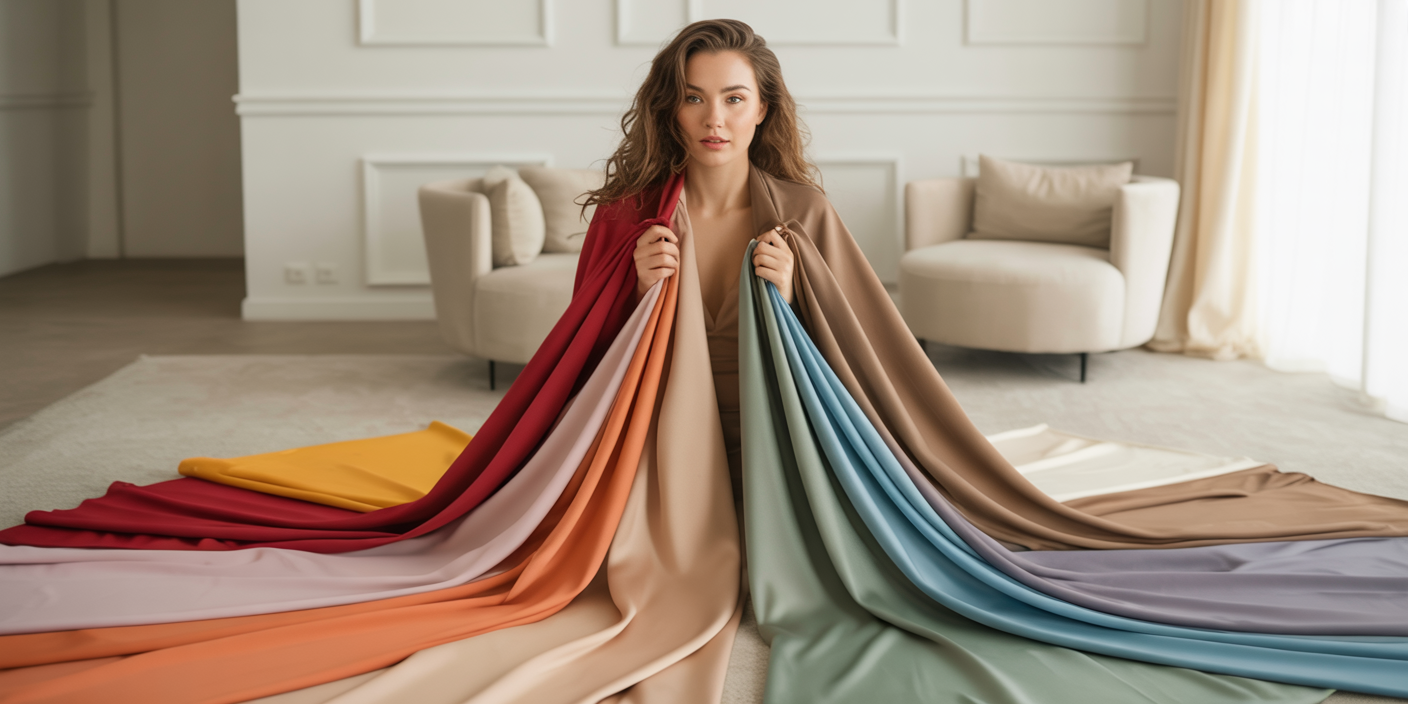
Color seasons connect personal coloring–skin, hair and eyes–to palettes of hues that commonly flatter individuals. The four season system classifies people as either Winter, Spring, Summer, or Autumn. Each season corresponds to a palette of colors that complement your natural coloring.
When your wardrobe matches your color season, it can simplify your closet decisions and enhance both your appearance and self-perception. It's based on undertones and depth in your coloring, but not everyone falls neatly into a category. Some are a mix of two seasons or fall in between.
Though color seasons are nice for style planning, they're not laws — creativity and personal taste count, as well.
The Theory
Seasonal color analysis expands on color theory, which examines how colors blend, complement, and influence each other. It's based on the concept that each of us has a specific combination of characteristics—skin, hair and eyes—that reflects light and color differently.
Echoing your natural coloring with colors you wear brings balance whereas clashing tones may wash you out or make you look fatigued. Color theory ties into mood, as cool blues and greens soothe, while warm reds and yellows can invigorate.
These psychological effects often affect how people feel in certain outfits. The color qualities — warm, cool, clear, soft — resonate with personality traits, offering insight into which hues may best emphasize personal style.
The Four Palettes
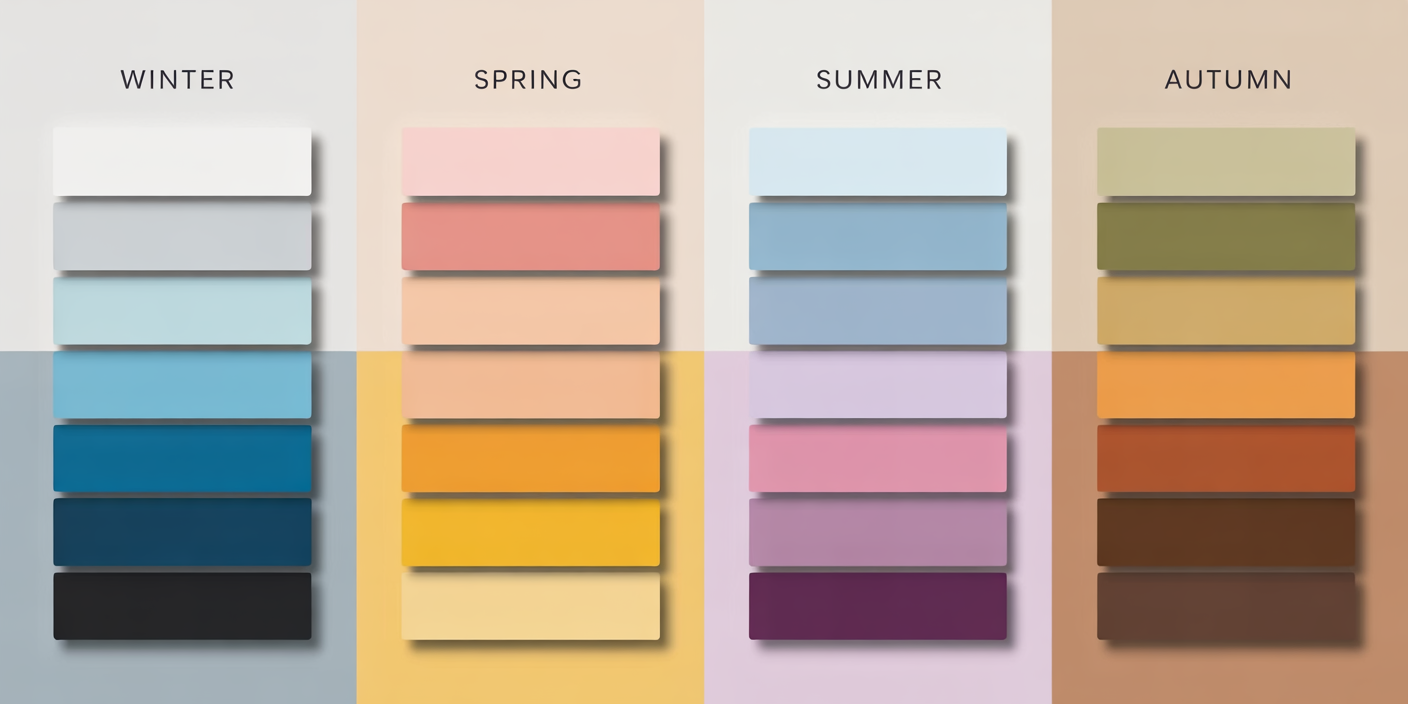
- Winter: Cool undertones, clear contrast, suit sharp and icy shades like black, white, navy, and jewel tones (emerald, sapphire).
- Spring: Warm undertones, light features, best in bright, clear, and warm colors—think peach, coral, light blue, and sunny yellow.
- Summer: Cool undertones, soft coloring, look great in dusty, muted shades such as rose, lavender, powder blue, and soft gray.
- Autumn: Warm undertones, rich tones, fit earthy and muted colors—olive, mustard, burnt orange, and chocolate brown.
Color palettes help trim your choices, so it's easier to identify which tones elevate your look. Winter and Summer skews cool, Spring and Autumn skews warm.
For instance, a golden-haired, green-eyed beauty may adore Autumn's colors, while her dark-haired, pale-skinned friend may prefer the Winter palette. Every palette seeks to amp natural beauty, but there's space to experiment and customize, particularly since a few of us fall between seasons or are attracted to a combination.
The Undertone Clue
Undertones are crucial to the seasonal color analysis. They have to do with the warmth or coolness under your skin's surface and can manifest in your hair or eyes. Warm undertones typically have traces of gold or peach, whereas cool undertones are pink or blue based.
To determine your undertone, peek at your veins–green whispers warm, blue shouts cool–or observe whether gold or silver jewelry shines brighter on you. Sun reaction is another clue: easy tanning may mean warm undertones, while burning suggests cool.
The skin undertone coincides with the seasonal group. Warm undertones aligned with Spring or Autumn, cool with Summer or Winter. Some fall in-between, like Soft Autumn or Soft Summer, with aspects of each.
How to Find Your Color Season
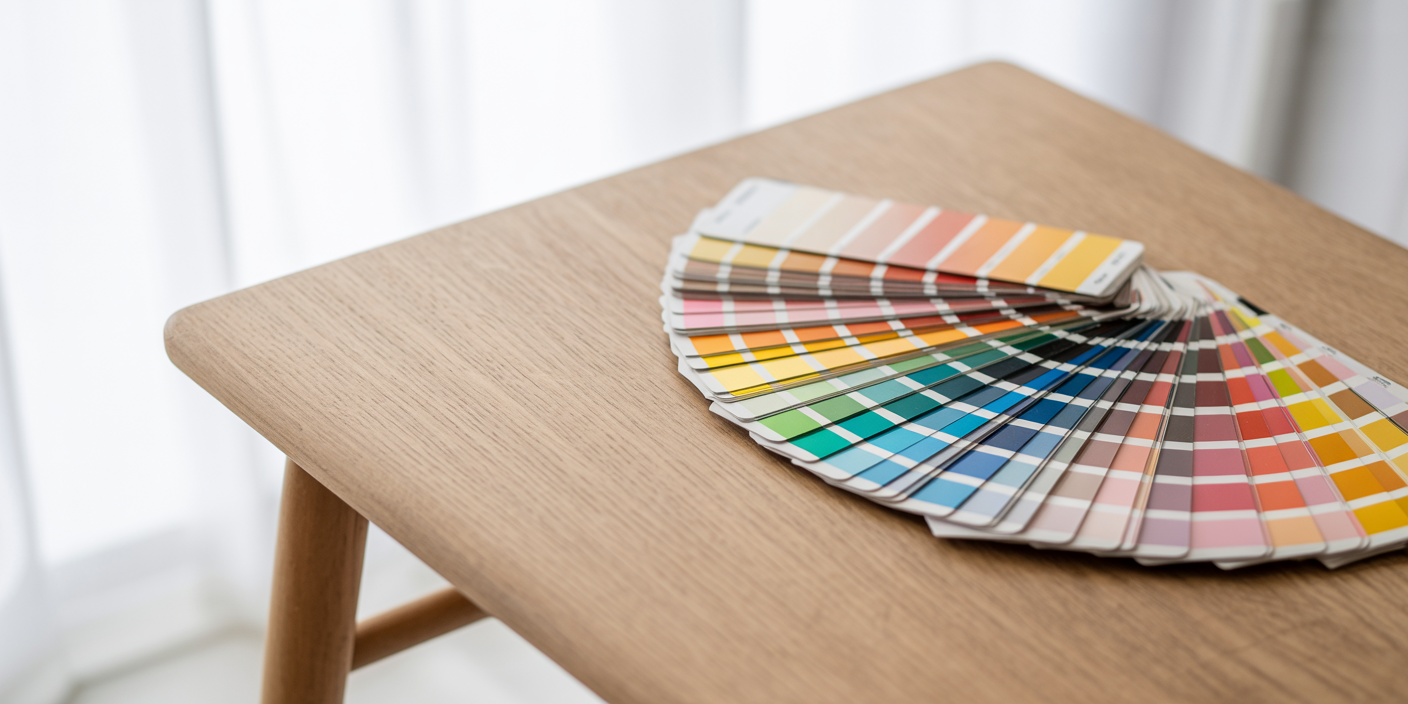
Figuring out your color season involves an intimate exploration of your skin, hair and eyes, then testing how they respond to a multitude of colors. The objective is to identify the undertones—warm or cool—that define your optimal colors. This can assist you in making intelligent decisions for clothing and accessories, so the hues you select accentuate your natural features in the most flattering way.
Even if not everyone fits into a season perfectly, color analysis is most effective when you segment the process into distinct phases.
1. Your Skin
Skin tone is the beginning. We are all either warm (gold or peach), cool (pink or blue) or neutral (a mix) undertones. One quick test is to look at your veins. If they appear greenish, your skin probably has warm undertones. Blue/purple veins = cool undertones. Neutral undertones could display both.
Look for clues in how your skin responds to gold or silver. Silver jewelry flatters cool skin, and gold to warm skin. Some olive skinned people may display both, which can blur the line.
So although it's common to hear about skin tone groups as fair, medium, olive and deep, each one of these can be any season, depending on undertone.
2. Your Hair
Use your hair color to slim down your season. Natural redheads tend to be Springs or Autumns, ashy blondes and browns are Summers or Winters. Knowing if your hair is warm or cool is essential. If your hair has a golden or copper cast, you're a warm lean.
If it is ashy or doesn't have any trace of gold, you probably have cool undertones. Attempt to hold colored fabrics by your hair. If warm earth tones (think rust or camel) make your hair appear richer, you could be an Autumn.
If icy shades or jewel tones (like cobalt or emerald) lift your hair, Winter might be more your style.
3. Your Eyes
Eye color provides a powerful hint. Blue, grey or cool green eyes frequently appear in Summers or Winters. Warm brown, hazel, or golden green eyes indicate Spring or Autumn. Search for flecks—gold hints imply warmth, slate or silver imply coolness.
Drape various fabric colors around your face and observe if your eyes become more vivid or become dulled. Other times, a color that complements the flecks in your eyes accentuates their depth the most.
4. The Drape Test
A drape test is a simple means of determining what suits. Grab some basic fabric swatches in warm and cool colors. Place each beneath your chin and check in natural light. If a color makes your skin look fresh, hey, it's a match.
If it casts shadows or exhaustion on your face, it's not your season. Take pictures with your phone. This helps you keep track of what colors worked as you construct your palette. Jot down any tendencies you notice for later.
5. The Final Verdict
Match what you observed with your skin/hair/eye coloring. Trust what you see and stick to your findings. Keep your best color swatches handy.
Try them until you're certain and choose what fits you.
Common Misconceptions
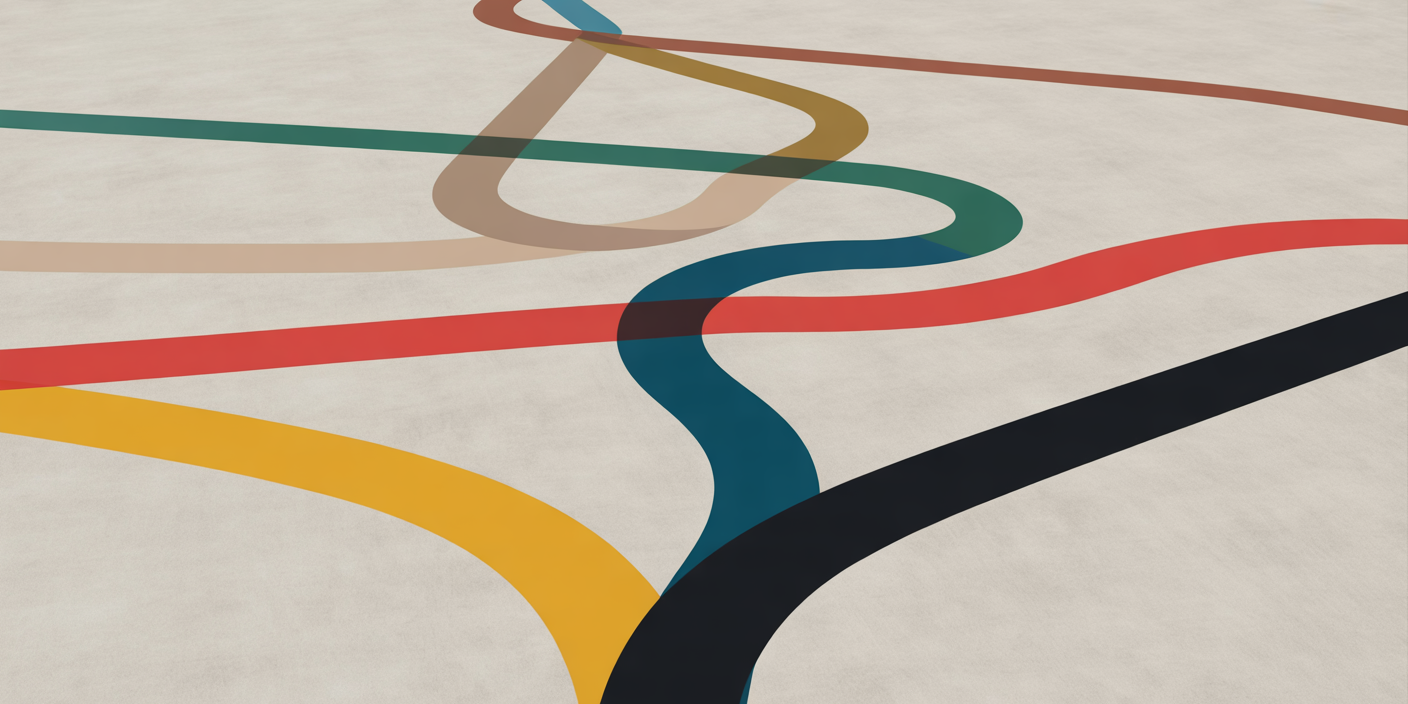
Color analysis is an area that tends to inspire strong opinions and confusion. A lot of myths muddy the waters regarding how color seasons operate and who fits where. These notions can constrain individuals or compel them to decide against their authentic characteristics or preferences.
Understanding the reality these common myths allows readers to approach their color season and style with more nuance and consideration.
Hair Color Myths
Hair color receives too much emphasis in color season analysis. While most think it determines your season by itself, it doesn't. Natural blondes, for instance, are often assumed to be Winters.
However, Winters require strong contrast, which most natural blondes do not have. They believe a Winter must have dark hair, but we do light-haired Winters with cool undertones. Color seasons encompass a broad spectrum of hair colors, natural and dyed.
Just because you changed your hair color, it doesn't mean you switch color seasons. New hair color can alter the top colors in your palette, but your skin undertone and eye color are more important in season analysis.
Looking at your overall coloring—skin, eyes, and hair—provides a more comprehensive and precise outcome. Each color season holds many shades:
- Winter: Black, deep brown, cool blonde, ash brown
- Summer: Ash blonde, light brown, soft muted shades
- Autumn: Warm brown, red, copper, golden blonde
- Spring: Light gold, strawberry blonde, warm light brown
Skin Tone Myths
It's a misconception that skin tone alone determines your color season. Others believe pale skin has to be cool undertoned, or that darker skin is inevitably warm. This is an oversimplification.
Surface skin tones are just the beginning. Undertones—cool, warm or neutral—are more important. Any skin tone can fall into any color season. There exist Winters with deep skin and Summers with extremely fair skin.
The myth that tanning changes your season is untrue; tanning does not change your undertone, only your surface tone. Tricks such as looking at your veins to identify your undertone are inconsistent, as vein color varies for a number of reasons and it does not always correlate with your actual undertone.
Inclusive color analysis involves seeing beyond the surface level of skin and instead taking into account everything contributing to your natural coloring.
Ethnicity Myths
Others believe that ethnicity solely determines your color season, but that's not the case. All walks of life can slip into any season. Stereotypes, such as believing that only certain ethnicities are Winters or Summers, aren't representative of actual human variation.
The truest results stem from learning individual characteristics—skin undertone, eye color, hair color and contrast. For instance, blue isn't always cool and brown isn't always warm. Redheads are generally Spring or Autumn, but not necessarily.
Most are warm, though, so not every season works. Local tastes further influence perceptions and applications of color. Certain hues have cultural significance or status in various groups, and these forces come into play when selecting colors that resonate and ring true for you.
Flexibility and Personal Choice
Hard and fast color season rules can prevent people from taking risks or experimenting with what works best. Personal taste counts for a lot, and wearing colors you love will usually make you feel more confident than adhering to a chart.
Not one color, like black, suits everyone. It's black that only Winters wear well. We all have special things and should be open to experimenting with what feels good.
Beyond the Four Seasons
Seasonal color analysis began with these four basic categories—Spring, Summer, Autumn, and Winter. This framework works for a lot of people, but it can overlook the subtle spectrum of human shading. More contemporary schemes now divide these large types into subtypes.
These subtypes guide individuals to colors that complement their particular combination of skin tone, hair and eye color. Thinking beyond the core four seasons enables palettes to feel much more personal and versatile. It's great, too, for those of us who never really belonged to just one primary season.
More subtypes = more avenues for self-expression and wardrobe variation.
The 12 Subtypes
| Main Season | Subtype 1 | Subtype 2 | Subtype 3 |
|---|---|---|---|
| Spring | Light Spring | True Spring | Warm Spring |
| Summer | Light Summer | True Summer | Soft Summer |
| Autumn | Soft Autumn | True Autumn | Deep Autumn |
| Winter | Deep Winter | True Winter | Clear Winter |
Each of these 12 groups subverts the traditional four seasons. Light Spring, for instance, prefers pastels and airiness, while Warm Spring embraces goldenness. Soft Autumn harmonizes with muted earth shades.
Deep Autumn introduces richer, deeper browns and olives. Some in the Clear Winter tribe gleam in strikingly high-contrast blacks and whites. True Winter might favor cool, vibrant blues.
Once you find your subtype, you can dial in your wardrobe and makeup to your undertones and contrast. This is great if you feel off in the colors your primary season recommends. So it's worth trying on the hues of each subtype. Sometimes just a little push lighter or darker makes all the difference.
The 16 Subtypes
| Main Season | Pure | Tone | Tint | Shade |
|---|---|---|---|---|
| Spring | Pure Spring | Toned Spring | Tinted Spring | Shaded Spring |
| Summer | Pure Summer | Toned Summer | Tinted Summer | Shaded Summer |
| Autumn | Pure Autumn | Toned Autumn | Tinted Autumn | Shaded Autumn |
| Winter | Pure Winter | Toned Winter | Tinted Winter | Shaded Winter |
The 16-season system takes it one step further. Each of the primary seasons then divides into four according to subtle characteristics—such as how clear, muted, light or dark the coloring is.
A Tinted Summer, for instance, would be ideal for soft lavenders and light blues, but a Shaded Summer could take the deeper, stormy grey. These additional efforts assist individuals who didn't identify with previous frameworks.
A range of online quizzes, apps and professional color consultants can assist you in determining your precise location within these broadened categories. It's the smaller accents that can bring you dangerously close to a palette that resonates as if made just for you.
Your Unique Palette
With all of these choices, you can create a spectrum that feels authentic to you. This is beyond finding your chart—it's about combining your flattery type with your preference.
Apps and online color pickers can assist you and capture your favorites. Even a mood board or a swatch works. Venturing past the fundamentals takes the guess work out of shopping and getting dressed.
Once you have those colors that look right and feel right, it can give your confidence a lift and let your style shine.
The Limits of Self-Analysis

Determining your color season seems straightforward, but it's not necessarily black and white. Most of us are hard to evaluate our own features, particularly if they don't conform to a textbook case or have more neutral undertones.
When a person's coloring falls near the middle — not obviously warm or cool, not obviously light or dark — it's really easy to hover between two seasons.
Digital Inaccuracy
Using tools or online quizzes feels efficient, but they get it wrong. Cameras and screens distort colors, sometimes rendering warm tones cooler, or soft hues lighter.
No phone filter or computer quiz can demonstrate how colors play on your skin in real life. Depending on these in isolation, most people under or overestimate their undertones or find themselves flitting between two potential seasons.
Some online systems employ a simple four-season model, bypassing the richness of the real human.
It's clever to verify colors in daylight. Experiment by holding various colored cloth or paper towards your face, by a window. Natural light brings out your true undertones way more than bulbs or phone screens do.
Lighting's Role
The lighting changes everything. That same shirt can look completely different, at noon in the sun, or indoors with yellow-hued bulbs.
A shade that appears ideal in a blindingly white store could easily appear wrong at home. That's why some folks are seasonally hopping around, depending on when and where you look.
It pays to try colors in multiple locations. Stand in the sunlight, then test the same color inside with other bulbs. If a shade works all over, it's probably a good fit.
Natural light is the ultimate test—you experience the most authentic version of each color.
Professional Insight
It's different seeing a color analyst in person. Professional consultants have looked at thousands of faces and know how to detect subtle changes in skin, eyes and hair that could be difficult to observe yourself.
They employ an enhanced 12-type system, not merely four, to accurately locate the ideal match even for individuals with neutral or difficult-to-categorize coloring. A consultant can catch things that online filters don't, like your skin's reaction to particular tones or the way your features shift in glaze.
Their guidance is especially useful if you've tried self-tests and ended up confused. Even those with less obvious or more neutral features can get a clear, tailored answer from a professional.
Applying Your Seasonal Colors
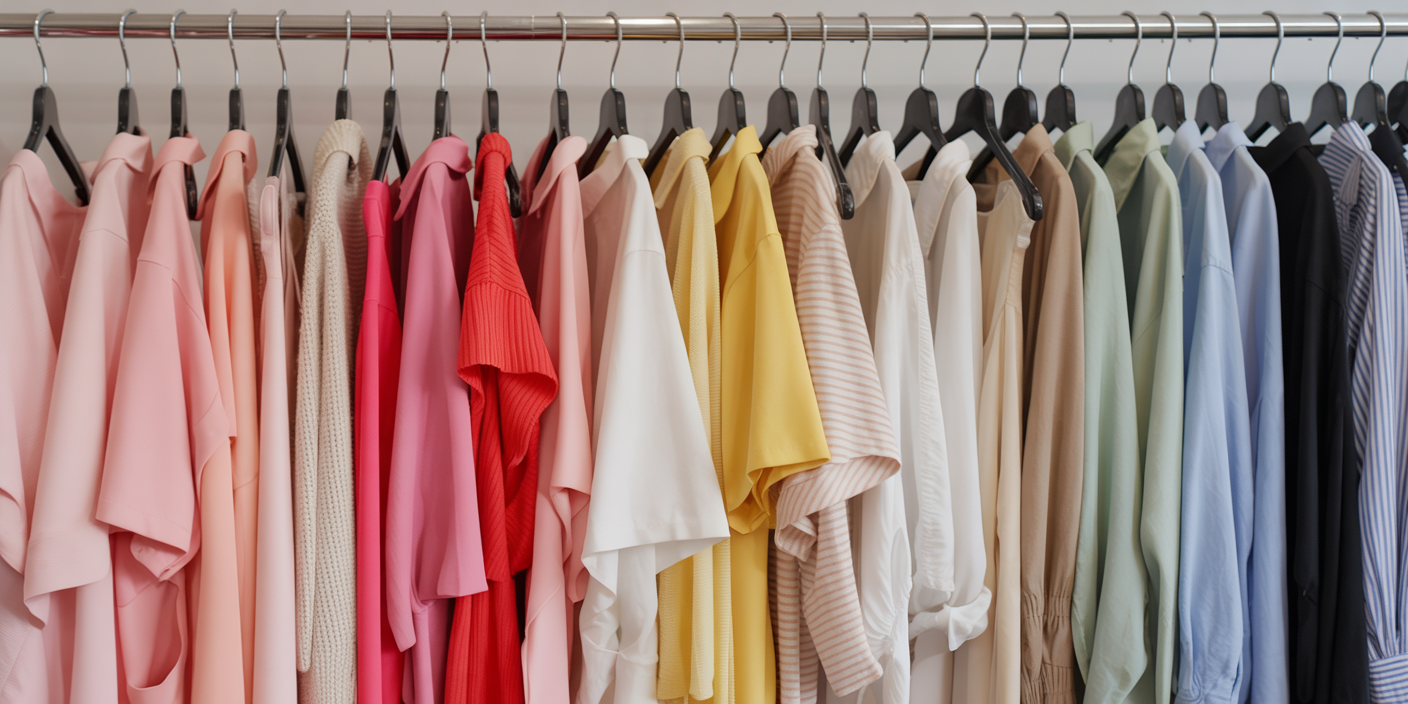
Seasonal color theory can influence everyday style decisions, from fashion to makeup. Although the four-season concept – Spring, Summer, Autumn, Winter – provides a good beginning, the majority of individuals discover their features cross seasons. This is what makes color analysis so useful and intimate.
Applying your seasonal colors aids you in selecting shades that compliment your natural features, but it doesn't need to limit creativity or self-expression.
Wardrobe Building
Begin by selecting garments that resonate with your seasonal colors. Light Springs might grab soft peach or sky blue, Deep Winters gravitate toward bold burgundy or pure black. Rarely do we fall neatly into one season, so work with your undertone (warm or cool) and depth (light or deep) in your coloring.
Sprinkling in staple pieces in your best neutrals—like a beige coat for Autumn or a navy blazer for Summer—makes it simpler to mix and match. Layering these with accent pieces—like scarves or shoes in your most flattering shades—can give you a pulled-together look without a lot of work.
By mixing the colors from your seasonal palette you have more options and make your wardrobe more versatile. Key investments, like a sweater in your signature color that fits you like a dream, or a dress that flatters your undertone, can anchor your closet for years.
Makeup Choices
Seasonal colors don't just guide your outfit—they help you select makeup that flatters your features. A warm Spring may opt for peachy blush and coral lips, and a cool Summer for rose pinks and mauve. Your skin, hair, and eyes all have an undertone that influences how colors appear on your face — so complementing makeup with that undertone results in an effortless, naturally beautiful look.
Experiment with seasonal shades—gold eye shadow for Autumn, plum lipstick for winter—to see what suits you best. Others straddle two seasons, or shift back and forth, so it's good to experiment with new makeup as you go.
We're aiming to emphasize your natural coloring, not adhere to rigid rules. That way your makeup always complements, not competes, with your style.
Evolving Style
Style is something that evolves. Knowing your season is a guide, not a mandate. As you get older, your hair or skin tone can change and the colors that suit you may change. Giving your color analysis a once-over every now and again keeps your style crisp.
Don't be afraid to experiment with new colours, even those outside your palette; experimenting can add joy and keep your look fresh. What you like counts as much as theory, so remain open to shifting.
Conclusion
Discovering your color season can guide you in selecting outfits, makeup, or even hair dye. Folks reference this style guide to shop more quickly or simply to feel confident in their clothes. Trends come and go, but knowing your colors stays. Mistakes occur–we all confuse hues or experiment with daring selections once in a while. That's some of it. No system suits all. Some people love to consult a pro, others simply trust the mirror. Either way works. You can begin with the fundamentals, then test out new hues along the way. To make the most of your style, experiment with your color season in small doses and observe what resonates. For additional tips or real life stories, browse more guides or join style chats online.
Frequently Asked Questions
What is a color season?
A color season is a palette of colors that harmonize with your natural coloring, including your skin, hair and eyes. It assists you in selecting outfits and cosmetics that flatter you.
How can I find my color season?
Pay attention to your skin undertone, hair and eye color in natural light. Try a color season chart or better yet, go see a color analyst for a precise answer.
Are color seasons the same for everyone?
No, color seasons depend on features. Two people with comparable hair or skin tones can have different best colors depending on their undertones and contrasts.
Can I wear colors outside my season?
Yes, you can wear whatever color you want. Though colors from your season will typically make you appear more vibrant and healthy.
Is color analysis accurate if I do it myself?
Self-analysis is useful, but not quite right. A professional color consultant can provide a more definitive result.
What if I don't fit perfectly into one season?
Most individuals possess traits from multiple seasons. Modern color analysis tends to include flow seasons or blended categories for a closer fit.
Why does knowing my color season matter?
Identifying your color season assists you in selecting garments and cosmetics that accentuate your inherent allure. It time it shopping and increases your confidence in how you look!